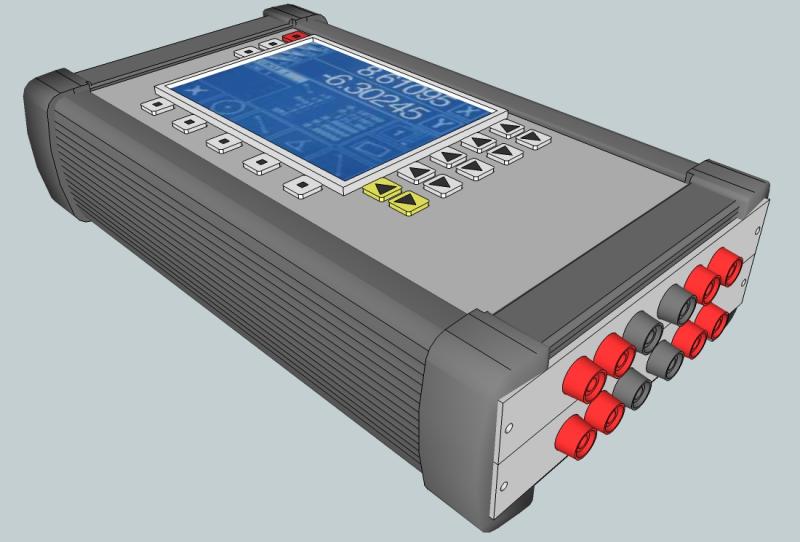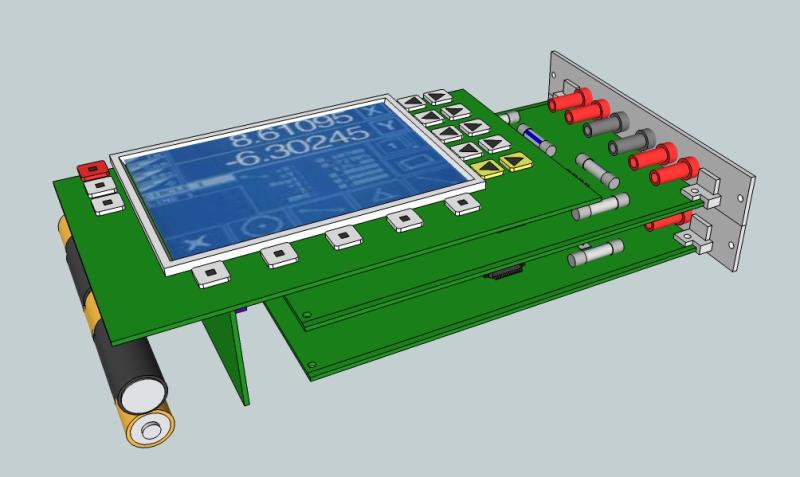Hello there, first post on the forum...
I've been pondering with the idea of data acquisition for over a year. You know, cobbling together some sensors, do the signal munching and data crunching and pass the data to a PC to be displayed and recorded.So I was thinking whether or not it would be a good idea if I brought the subject to Dave, whom I don't know except watching his videos on YouTube. Since I don't know how to design electronics it occurred to me that it may not be such a good idea to push half baked ideas to people I don't know in order to get them to design it for me.
Anyway PXI was mentioned in the thread and since I was drooling over it for long time I decided to go ahead and draw things as I imagined them. So I put together most of the ideas I liked from the forum to see what it would look like.
Design criteria as follows:
- Should use PXI form factor.I really like PXI. It has everything necessary for measurement and control work. Basically it is a PCI bus with a few additions like precision timing, star triggering etc.
The physical layer of PXI is taken from IEEE 1101.10 which is the standard dealing with Eurocard physical dimensions which are ment to go in 19" racks. Since this is worldwide standard finding cases and hardware should be easy and cheap.
http://ph-dep-ese.web.cern.ch/ph-dep-ese/crates/standards/1101_1.pdfThe backplane of PXI is largely based (but not exactly the same) on CompactPCI which is also industry standart.
Other than that everything revelant is published on
http://www.pxisa.org/Specifications.htmlAll in all a community designed multimeter has best chances of survival if it is based largely on industry standard hardware. Thus it can live inside many standard cases side by side with commercial stuff and other community gadgets like LCR's, Load cell amplifiers, Thermocouple modules, Frequency generatos, counters, relay boards, SDR's etc. etc.
- Standart Commercially available case As I said, I am all for PXI and if this multimeter is ever developed I'd stick it in a 3U Rack with all the other community developed things to go with it. However the conversation is about a hand held device so i drew it as such. My point is that you can have both PXI and "Hand Held" at the same time. This case can house two PXI units. If it ever becomes available, users can switch one of the channels for a LCR for example.
The box on the pictures is BOPLA Aluplan 51020 it measures 245mm Lenght x 143mm Width x 52mm Height. It is made from aluminium extursions. Top and bottom covers are 3mm thick everything else is thicker. Corner pieces are zinc castings. I don't know how much it costs but sure beats 30.000$ tooling cost for custom case.
http://www.bopla.de/en/product-catalog/enclosure-technology/product-category/aluplan-13/product-detail/ap-51020-2.htmlIt is ment to be held sideways so that when sitting inclined on a bench the probe cables are sticking out from the right side - away from where your hands would be when pushing the buttons.
- Enough space for batteries Currently it has 4 AA cells inside. Maybe it can accomodate 4 D cells if very slightly bigger box was chosen. I think a power input should be made available as well. So that the gadget can work for months measuring away some mundane thing an give alarm and start logging data only if some alarm condition is met.
Something like "Give alarm and log data as long as Channel #1 voltage is below 6.25V AND Channel #3 Temp is above 99 Degrees Celsius" Which would mean that your chemical reaction is underway even when you are not applying power. Which may as well mean that you hit the Jackpot and you are going to be rich.
- Good User InterfaceDave said he likes 7 segment dispalys but 4 dispalys with 5 digits each? I'd prefer a good ole monochrome LCD please. The one on the picture is 100mm x 70 mm (say 4 by 3 inches). Button arrangement is inspired from aircraft interfaces with a screen and soft buttons around it. A slight twist is the two row buttons on the right side which may be used to alter preferences without entering menus.

Front View

Side View

Side View - Connection Jacks

Cross Section - To show what goes where

The small PCB behind the batteries is the "PXI Back-plane" of course it is not standard.it connects only 3 modules (the main board with the display is also a module)


This is standard Eurocard size 3U. PXI, CompactPCI, IEEE 1101.10 and probably many others all use this form factor. Sockets at the back side change from standard to standard.

Well, I'd like to hear what you think
Edit: Dave mentioned these sketches on The Amp Hour.
Starts around 0:20:05